Silvia Giordano
On the interplay of Explainability, Privacy and Predictive Performance with Explanation-assisted Model Extraction
May 13, 2025Abstract:Machine Learning as a Service (MLaaS) has gained important attraction as a means for deploying powerful predictive models, offering ease of use that enables organizations to leverage advanced analytics without substantial investments in specialized infrastructure or expertise. However, MLaaS platforms must be safeguarded against security and privacy attacks, such as model extraction (MEA) attacks. The increasing integration of explainable AI (XAI) within MLaaS has introduced an additional privacy challenge, as attackers can exploit model explanations particularly counterfactual explanations (CFs) to facilitate MEA. In this paper, we investigate the trade offs among model performance, privacy, and explainability when employing Differential Privacy (DP), a promising technique for mitigating CF facilitated MEA. We evaluate two distinct DP strategies: implemented during the classification model training and at the explainer during CF generation.
Differential Privacy for Anomaly Detection: Analyzing the Trade-off Between Privacy and Explainability
Apr 09, 2024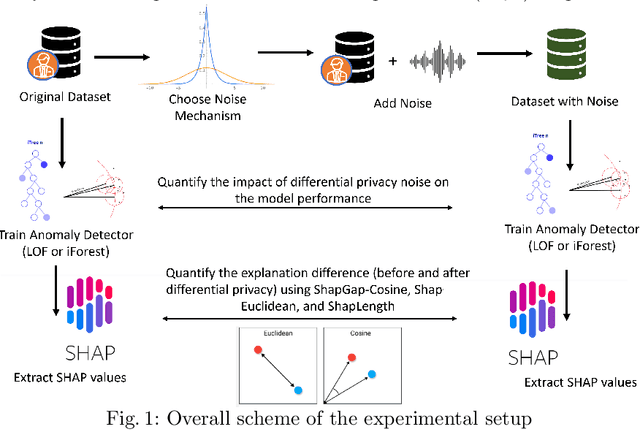
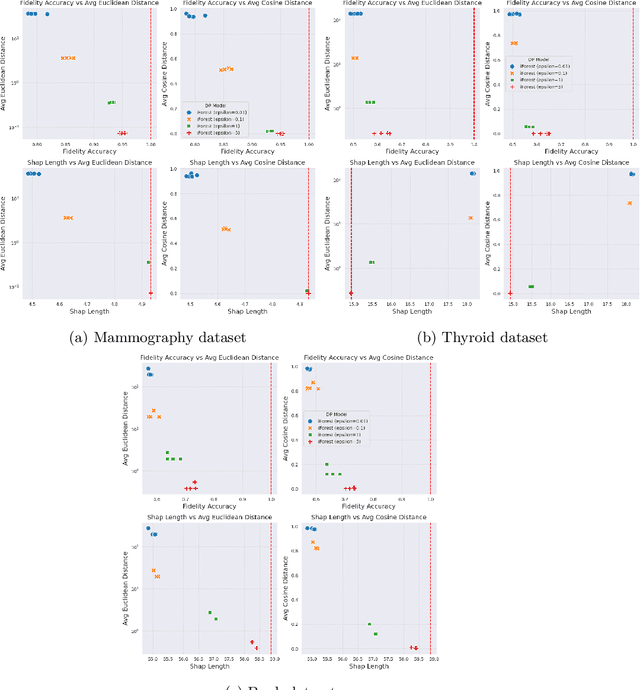
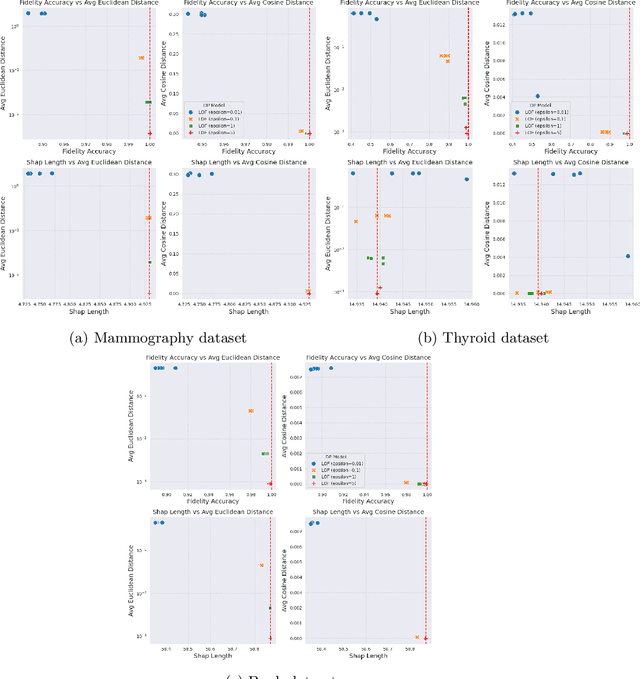

Abstract:Anomaly detection (AD), also referred to as outlier detection, is a statistical process aimed at identifying observations within a dataset that significantly deviate from the expected pattern of the majority of the data. Such a process finds wide application in various fields, such as finance and healthcare. While the primary objective of AD is to yield high detection accuracy, the requirements of explainability and privacy are also paramount. The first ensures the transparency of the AD process, while the second guarantees that no sensitive information is leaked to untrusted parties. In this work, we exploit the trade-off of applying Explainable AI (XAI) through SHapley Additive exPlanations (SHAP) and differential privacy (DP). We perform AD with different models and on various datasets, and we thoroughly evaluate the cost of privacy in terms of decreased accuracy and explainability. Our results show that the enforcement of privacy through DP has a significant impact on detection accuracy and explainability, which depends on both the dataset and the considered AD model. We further show that the visual interpretation of explanations is also influenced by the choice of the AD algorithm.
Liquid Neural Network-based Adaptive Learning vs. Incremental Learning for Link Load Prediction amid Concept Drift due to Network Failures
Apr 08, 2024
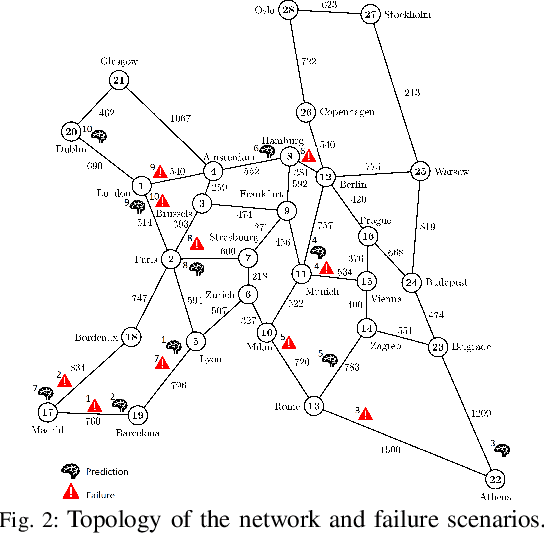

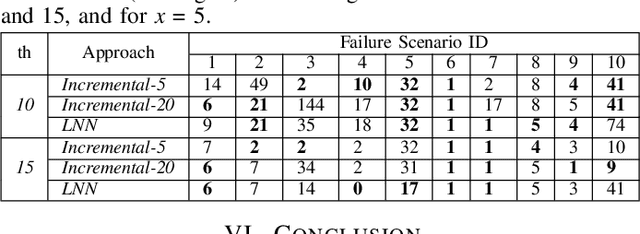
Abstract:Adapting to concept drift is a challenging task in machine learning, which is usually tackled using incremental learning techniques that periodically re-fit a learning model leveraging newly available data. A primary limitation of these techniques is their reliance on substantial amounts of data for retraining. The necessity of acquiring fresh data introduces temporal delays prior to retraining, potentially rendering the models inaccurate if a sudden concept drift occurs in-between two consecutive retrainings. In communication networks, such issue emerges when performing traffic forecasting following a~failure event: post-failure re-routing may induce a drastic shift in distribution and pattern of traffic data, thus requiring a timely model adaptation. In this work, we address this challenge for the problem of traffic forecasting and propose an approach that exploits adaptive learning algorithms, namely, liquid neural networks, which are capable of self-adaptation to abrupt changes in data patterns without requiring any retraining. Through extensive simulations of failure scenarios, we compare the predictive performance of our proposed approach to that of a reference method based on incremental learning. Experimental results show that our proposed approach outperforms incremental learning-based methods in situations where the shifts in traffic patterns are drastic.
Knowledge Distillation-Based Model Extraction Attack using Private Counterfactual Explanations
Apr 04, 2024Abstract:In recent years, there has been a notable increase in the deployment of machine learning (ML) models as services (MLaaS) across diverse production software applications. In parallel, explainable AI (XAI) continues to evolve, addressing the necessity for transparency and trustworthiness in ML models. XAI techniques aim to enhance the transparency of ML models by providing insights, in terms of the model's explanations, into their decision-making process. Simultaneously, some MLaaS platforms now offer explanations alongside the ML prediction outputs. This setup has elevated concerns regarding vulnerabilities in MLaaS, particularly in relation to privacy leakage attacks such as model extraction attacks (MEA). This is due to the fact that explanations can unveil insights about the inner workings of the model which could be exploited by malicious users. In this work, we focus on investigating how model explanations, particularly Generative adversarial networks (GANs)-based counterfactual explanations (CFs), can be exploited for performing MEA within the MLaaS platform. We also delve into assessing the effectiveness of incorporating differential privacy (DP) as a mitigation strategy. To this end, we first propose a novel MEA methodology based on Knowledge Distillation (KD) to enhance the efficiency of extracting a substitute model of a target model exploiting CFs. Then, we advise an approach for training CF generators incorporating DP to generate private CFs. We conduct thorough experimental evaluations on real-world datasets and demonstrate that our proposed KD-based MEA can yield a high-fidelity substitute model with reduced queries with respect to baseline approaches. Furthermore, our findings reveal that the inclusion of a privacy layer impacts the performance of the explainer, the quality of CFs, and results in a reduction in the MEA performance.
How "troll" are you? Measuring and detecting troll behavior in online social networks
Oct 17, 2022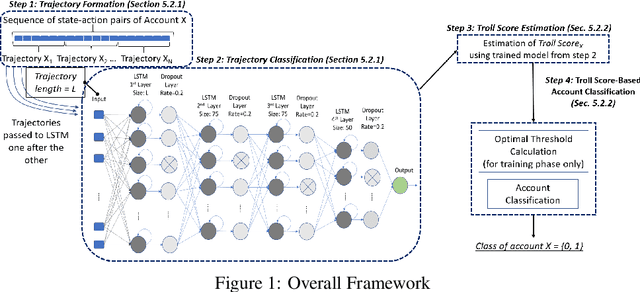
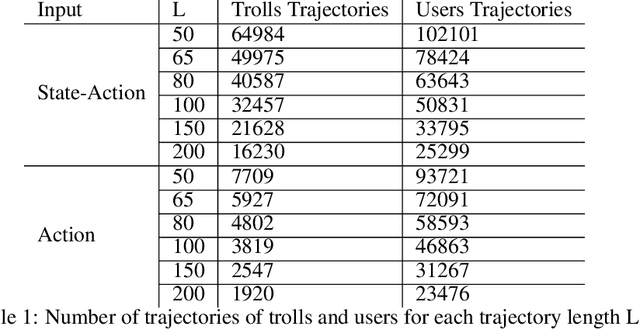
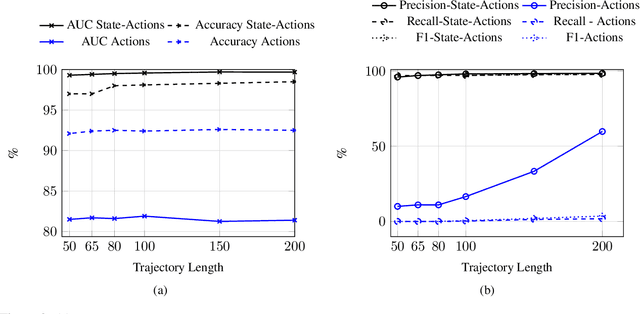

Abstract:The detection of state-sponsored trolls acting in misinformation operations is an unsolved and critical challenge for the research community, with repercussions that go beyond the online realm. In this paper, we propose a novel approach for the detection of troll accounts, which consists of two steps. The first step aims at classifying trajectories of accounts' online activities as belonging to either a troll account or to an organic user account. In the second step, we exploit the classified trajectories to compute a metric, namely "troll score", which allows us to quantify the extent to which an account behaves like a troll. Experimental results show that our approach identifies accounts' trajectories with an AUC close to 99% and, accordingly, classify trolls and organic users with an AUC of 97%. Finally, we evaluate whether the proposed solution can be generalized to different contexts (e.g., discussions about Covid-19) and generic misbehaving users, showing promising results that will be further expanded in our future endeavors.
Don't Feed the Troll: Detecting Troll Behavior via Inverse Reinforcement Learning
Jan 28, 2020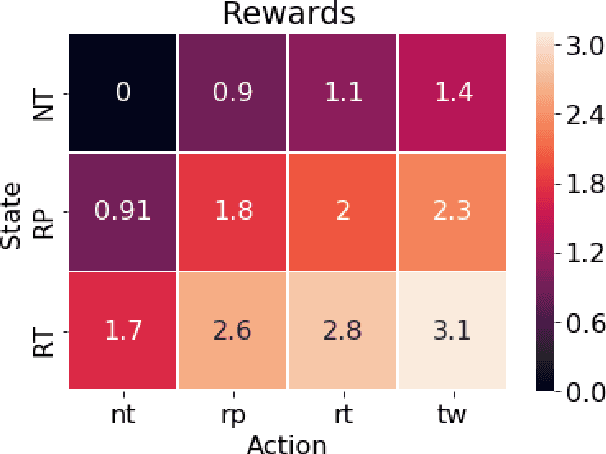
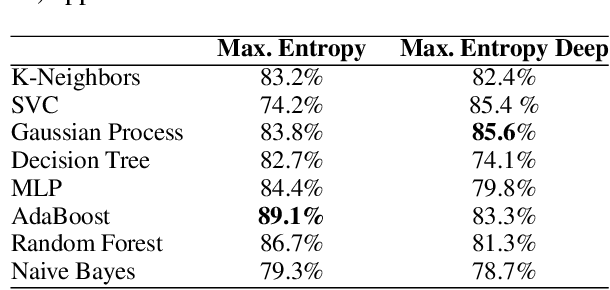
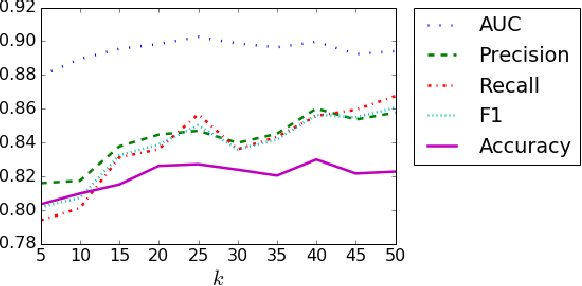
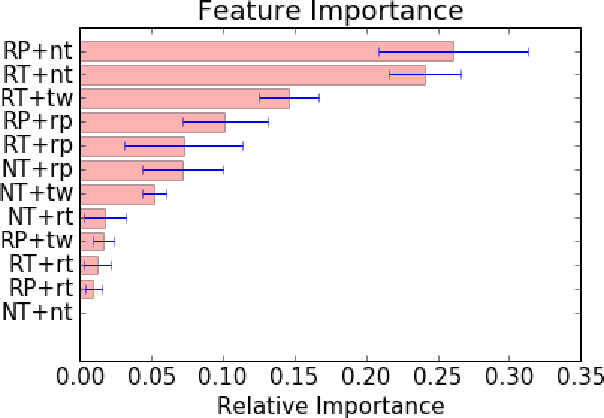
Abstract:Since the 2016 US Presidential election, social media abuse has been eliciting massive concern in the academic community and beyond. Preventing and limiting the malicious activity of users, such as trolls and bots, in their manipulation campaigns is of paramount importance for the integrity of democracy, public health, and more. However, the automated detection of troll accounts is an open challenge. In this work, we propose an approach based on Inverse Reinforcement Learning (IRL) to capture troll behavior and identify troll accounts. We employ IRL to infer a set of online incentives that may steer user behavior, which in turn highlights behavioral differences between troll and non-troll accounts, enabling their accurate classification. We report promising results: the IRL-based approach is able to accurately detect troll accounts (AUC=89.1%). The differences in the predictive features between the two classes of accounts enables a principled understanding of the distinctive behaviors reflecting the incentives trolls and non-trolls respond to.
 Add to Chrome
Add to Chrome Add to Firefox
Add to Firefox Add to Edge
Add to Edge